It’s easy to overlook the importance of securing our closet doors, but it is a vital step in ensuring the safety of your home and family. Whether you’re locking up valuables or just want to keep little hands out of forbidden places, there are several effective methods for keeping your closet doors shut. So, keep reading to learn more about how to lock closet doors.
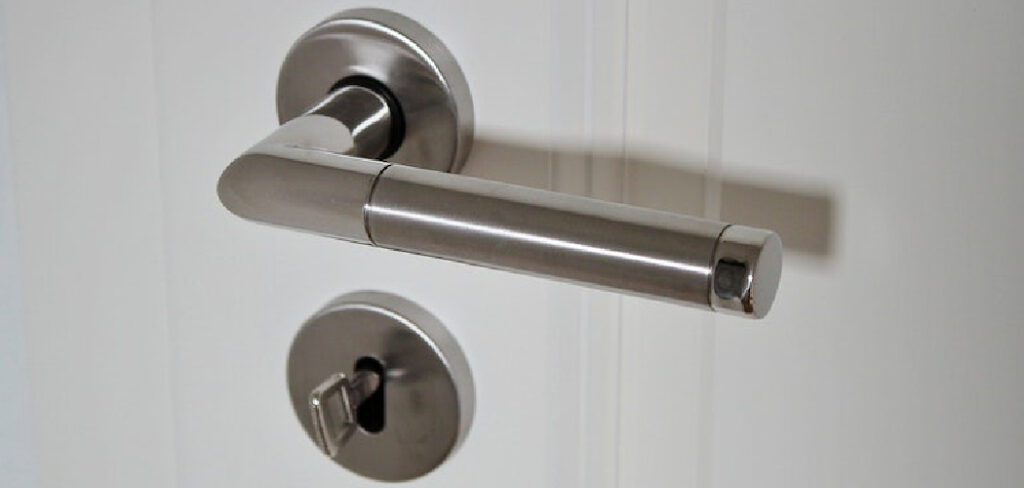
You can never be too careful when it comes to keeping your home secure. Before we dive into the various methods for locking closet doors, let’s first discuss why it’s important to do so.
What is the Purpose of Locking Closet Doors?
Locking closet doors serves multiple purposes. Firstly, it prevents unwanted access to the contents of your closet. This can be especially important for closets that hold valuable or dangerous items such as jewelry, medication, firearms, or cleaning supplies.
Secondly, locking closet doors can keep children and pets safe by restricting their access to potentially harmful materials. This is especially crucial for closets that hold chemicals or other hazardous materials.
Furthermore, locked closet doors can also act as a deterrent to burglars. If they are unable to easily access your closet, they may be less likely to target your home.
Additionally, locked closet doors can contribute to the overall security of your home by making it more difficult for intruders to enter.
Can You Lock Closet Doors?
With anything from children to seasonal clothing, many of us like to stash items away in our closets – but the question of how secure the belongings really are is often asked. Fortunately, modern closet doors are designed for security, with various locks and latch available on the market.
Whether you have a sliding door or a traditional hinged door model, there is an affordable and easy-to-install method to ensure your possessions stay safe and private. In addition to these products that deliver additional peace of mind, it is always good practice to remember to shut the door when you are done retrieving or putting away items!
Why Should You Lock Closet Doors?
Locking closet doors is an often overlooked but important action to complete to keep your home secure. With valuable items stored in many closets, such as clothing, jewelry, documents, and more, leaving a closet unlocked exposes them to potential theft.
Locking closet doors also limits access to dangerous objects that could be kept in the closet, such as cleaning supplies or tools, which adds a layer of safety if children are present in the household. Bearing this in mind and taking the extra wake-up call to lock all closet doors should be at the start of everyone’s home security routine.
Needed Materials:
Locks or Latches:
These can be purchased at most hardware stores and come in various styles to fit different types of closet doors.
Screws and Screwdriver:
Depending on the type of lock or latch you choose, you may need screws to secure it in place. Make sure to have a screwdriver that is appropriate for the size and type of screws needed.
Drill (Optional):
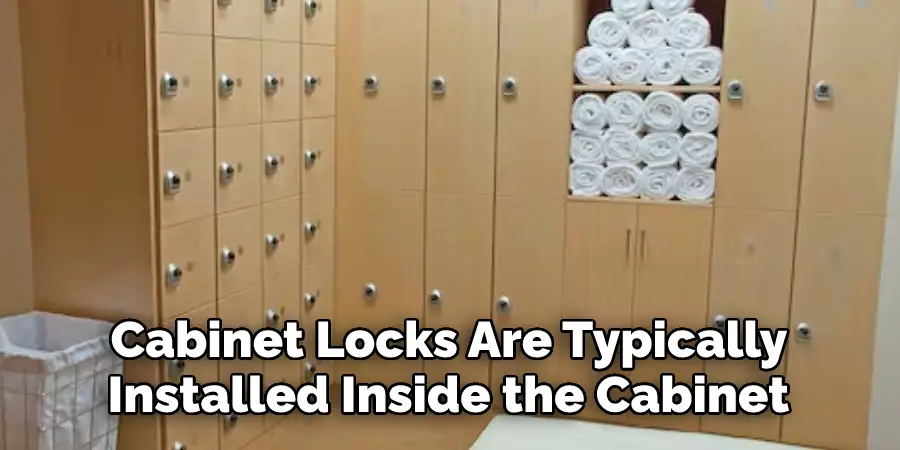
If your chosen lock or latch requires holes to be drilled, make sure you have the appropriate drill and drill bits.
7 Ways to Follow No How To Lock Closet Doors
1. Padlocks and Hasp Locks
One of the most common ways to lock closet doors is by using a traditional padlock or hasp lock. Padlocks come in many different sizes and styles, so you can easily find one that fits your needs.
However, if you’re looking for something more secure with a longer lifespan, then you should consider a hasp lock. A hasp is a metal plate with a hole on one end that allows you to secure it with a padlock or similar device. This type of lock offers better security because it cannot be easily broken.
2. Cabinet Locks
Another option for securing your closet doors is to use cabinet locks. These locks are designed specifically for cabinets and drawers, providing an extra layer of security against unwanted access.
Cabinet locks are typically installed inside the cabinet or drawer, which makes them difficult to remove without the proper tools. They also come in various sizes and colors, so finding one that matches your decor shouldn’t be too difficult.
3. Keyless Entry Systems
Perhaps the most advanced option for keeping closet doors secure is a keyless entry system. These systems allow you to control access to your closets with a code or key card instead of a physical key.
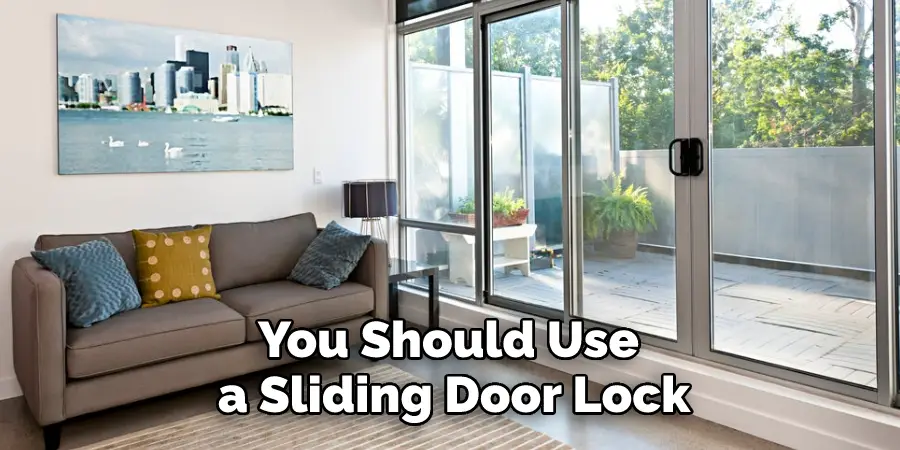
Keyless entry systems offer maximum security because they can only be accessed by authorized users who know the specific code or have access to the key card. They also provide convenience since there’s no need to worry about losing keys or forgetting combinations!
4. Deadbolts
Another reliable way to secure closet doors is using a deadbolt lock. This type of lock is designed to be more resistant to break-ins, as it uses strong steel bolts that can’t be easily forced open.
You’ll need to install the deadbolt onto the door frame to be effective, so it’s best to leave this job to the professionals.
5. Magnetic Locks
Magnetic locks are another great option for securing closet doors. These locks use a powerful magnet installed inside the door frame and can only be unlocked using a special key or code.
Unlike other types of locks, magnetic locks offer an extra layer of security since they cannot be picked or forced open without specialized tools.
6. Door Knob Covers
If you’re looking for a more basic solution to keep your closet doors secure, then consider using door knob covers. These simple devices fit over the existing doorknob and make it difficult for anyone to turn it from the outside.
They may not offer the same level of security as a padlock or deadbolt, but they’re still an effective way to deter intruders.
7. Sliding Door Locks
Finally, if you have sliding closet doors, then you should use a sliding door lock to keep them secure. These locks are designed specifically for sliding doors and typically come with two bars that can be adjusted to fit the thickness of the door. Once installed, the bars prevent anyone from being able to open the door from the outside.
By following these seven tips on how to lock closet doors, you can rest easy knowing that your closets and their contents are safe and secure. From simple solutions like knob covers to more advanced options like keyless entry systems,
Things You Need to Know Before Lock Closet Doors
When it comes to protecting important items from theft, locking closet doors is one of the most effective measures you can take. However, there are a few things that you should keep in mind before opting for this kind of security system.
Firstly, all locks should form part of a larger home security system and should have motion detectors or sensors on them to ensure that an intruder is detected if they attempt to access the items inside.
Secondly, consider the types of locks available, considering how much space they’ll occupy and how easy they are to open with a key or combination code.
Lastly, any lock needs to be installed properly by professionals who understand the nuances of installing secure locking systems – working with experts will provide better protection in the long run and ultimately give you peace of mind, knowing that your possessions are safe.
Benefits of Lock Closet Doors
Locking closet doors is an easy and effective way to keep your belongings safe and secure. Lock closets are often used in homes, apartments, offices, and schools since they offer extra security in vulnerable areas. In addition, closet locks can prevent break-ins, keeping trespassers out of even the smallest of spaces.
In addition to providing safety from unauthorized access, locking closet doors can also help keep items organized by limiting access to the closets. Finally, locking the closet doors can add peace of mind and feelings of security when stepping away from important items.
Installing lock closets can make all the difference while giving extra confidence that your valuable items are protected.
6 Common Mistakes People Make When Trying to Lock Closet Doors
1. Not Locking the Door
One of the most common mistakes people make when locking closet doors is not actually locking the door. This seems like an obvious mistake, but it’s one that people make all the time.
If you’re not locking the door, then it will not be very effective at keeping people out of your closet. So make sure that you turn the lock before you close the door.
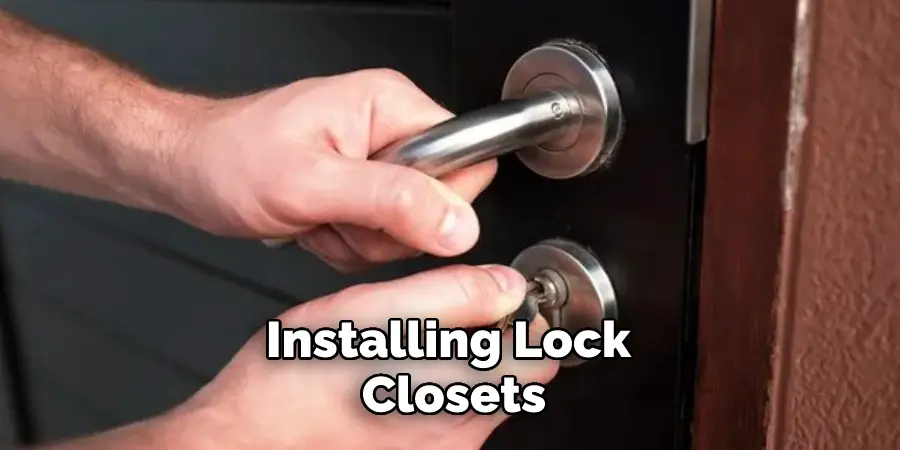
2. Not Checking the Lock
Another mistake people make is not checking the lock to make sure that it’s actually locked. This is especially important if you’re using a keyed lock, as you want to make sure that the key is in the lock and that it’s turned to the locked position. If you’re using a deadbolt, you want to ensure that it’s fully extended into the strike plate.
3. Not Using a Strong Lock
If you’re not using a strong lock, then your closet door will not be very secure. A strong lock will deter potential burglars and keep your belongings safe. Make sure you choose a lock made from high-quality materials rated for security. But keep in mind that the strongest lock may not be right for your closet door, so consider its size and placement before choosing a lock.
4. Not Hiding the Key
If you’re hiding the key to your closet door, then you’re making it easy for someone to break in. Make sure that you keep the key in a safe place where only you know where it is. A good place to hide a key is in a potted plant or under a doormat. The key should never be hidden in an obvious place, such as under a rock or on top of the door frame.
5. Not Reinforcing the Door
Another mistake people make is not reinforcing the door itself. This can be done by installing a deadbolt or by using longer screws to secure the hinges to the frame. By reinforcing the door, you’ll make it more difficult for someone to break through it. You can also add a door jammer or security bar for additional reinforcement.
6. Not Keeping valuables in Your Closet
If you’re keeping valuables in your closet, then you’re making it an attractive target for burglars. Instead, keep your valuables in your bank’s safe or deposit box. This will keep your valuables safe and also help deter potential burglars. If you must keep valuables in your closet, make sure to use a locked safe within the closet for added security.
Locking closet doors is an important step in protecting your belongings, but people often make a few mistakes when trying to lock their closet doors. Make sure that you’re taking the necessary steps to ensure the security of your closet. That way, you can keep your belongings safe and sound.
Additional Tips:
- Consider installing a peephole or security camera near your closet to monitor any activity.
- Make sure to regularly check and maintain your locks to ensure they are functioning properly.
- If you have children, make sure to educate them about the importance of keeping closet doors locked and secure.
- Don’t forget to also consider locks for sliding closet doors or mirrored closet doors.
- Consider using smart locks that can be controlled remotely through a smartphone app.
- When traveling or leaving your home for an extended period, invest in a secure lock box for any spare keys or keyless entry codes.
- Lastly, always consult with a professional locksmith for expert advice and installation of locks. They can also provide additional security measures such as keyless entry systems or keypad locks, for added convenience and safety. So, take the time to properly secure your closet doors and give yourself peace of mind, knowing that your possessions are safe and secure.
Overall, locking closet doors may seem like a simple task, but it can greatly enhance the security of your home and belongings. By avoiding common mistakes and taking additional precautions, you can ensure that your closet is a safe haven for your possessions.
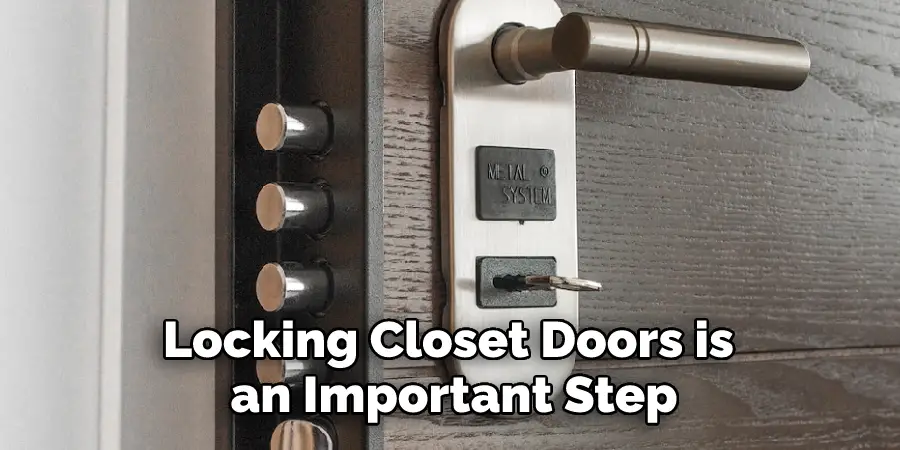
Frequently Asked Questions:
Q: Can I Use a Regular Padlock on My Closet Door?
A: It is not recommended to use a regular padlock on your closet door as it may not fit properly and can potentially damage the door. It’s better to invest in a lock designed specifically for closet doors. The same goes for using a deadbolt – make sure it is the right size and type for your door. You can also consider a keyless entry system for added convenience and security. You can also consult a professional for advice on the best locking option for your specific closet door.
Q: How Can I Prevent the Lock from Jamming?
A: To prevent your lock from jamming, make sure that it is properly maintained. Lubricate the lock occasionally with graphite or silicone spray to keep it working smoothly. Also, be careful not to force the key into the lock if it doesn’t fit easily, as this can cause damage and lead to jamming. If your lock does become jammed, seek professional assistance to avoid damaging the lock or door further.
Q: Can I Install a Lock on My Existing Closet Door?
A: Yes, you can install a lock on your existing closet door. However, depending on the type of lock and your skill level, it may be best to seek professional help for proper installation. This will ensure that the lock is secure and functioning correctly. You can also consider replacing your existing doorknob with a lockable one for added convenience and security.
Q: How Often Should I Change My Closet Door Lock?
A: It is recommended that your closet door lock be changed if it becomes damaged or compromised in any way. If you are concerned about security, consider changing your locks every few years to ensure they are in good working condition and not susceptible to potential tampering or picking. Additionally, make sure to change the locks if you have recently moved into a new home or apartment. Alternatively, consider upgrading to a more secure lock system for added peace of mind.
Conclusion
Locking your closet doors is essential for protecting valuable items and preventing children from getting into places they shouldn’t be exploring!
There are several different methods for doing this, ranging from simple padlocks and hasps all the way up to advanced keyless entry systems. Whatever you choose will depend on the level of security and convenience you require from these locks!
No matter which method you choose, rest assured, knowing that your closets are safe and sound! Thanks for reading our post about how to lock closet doors.
